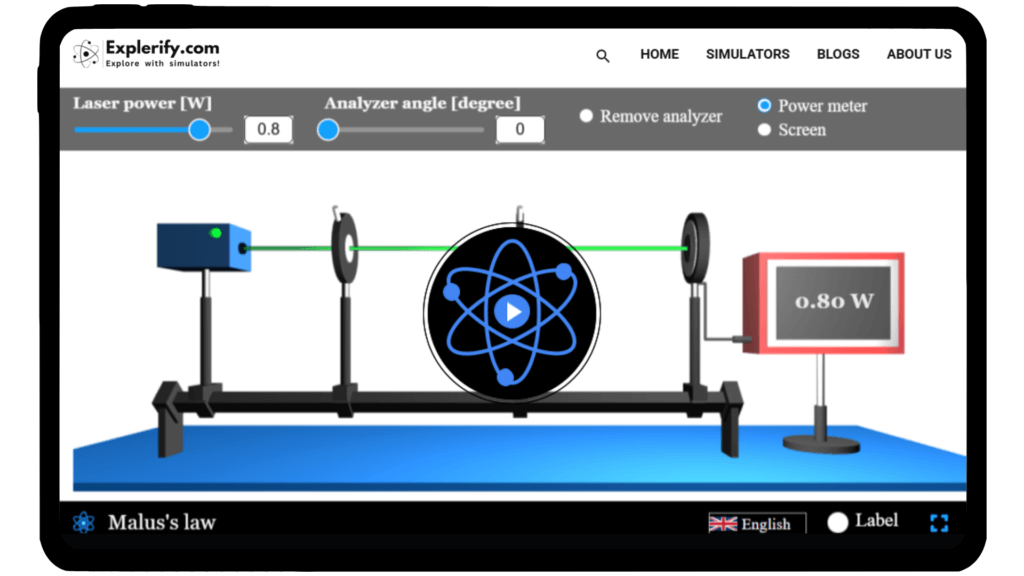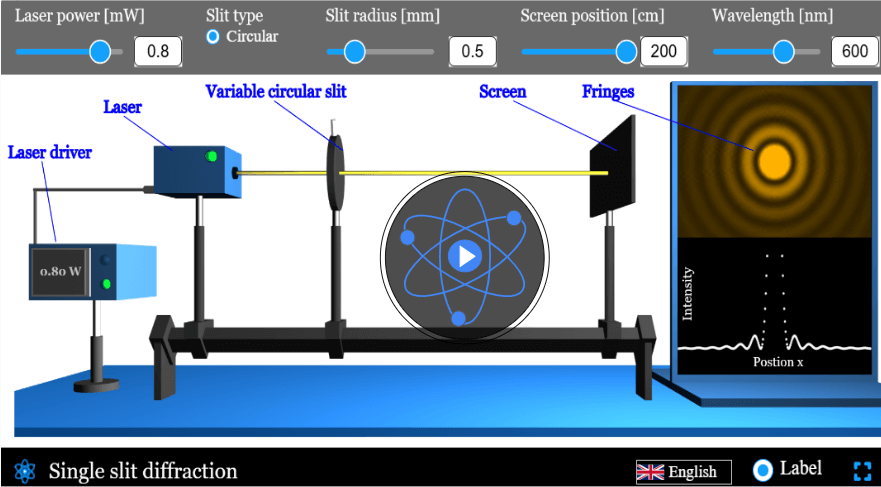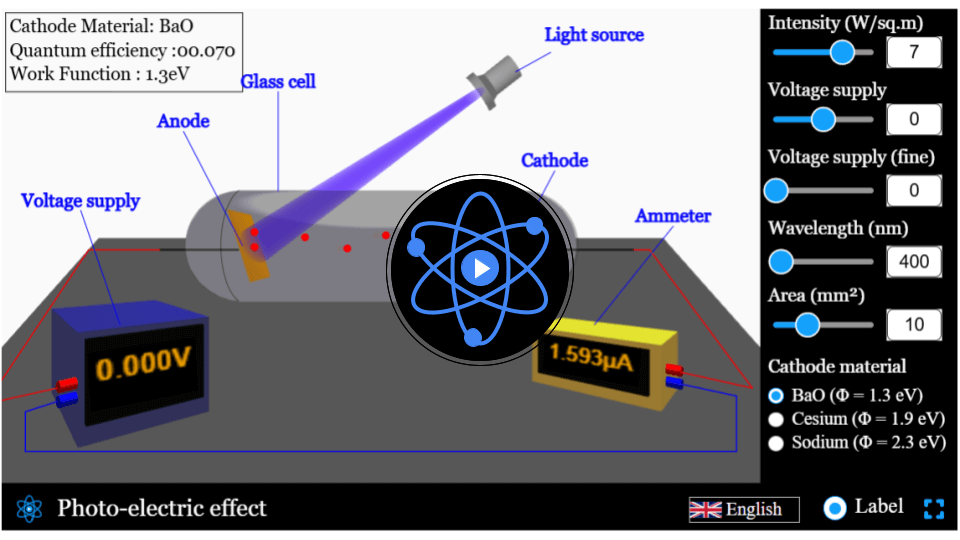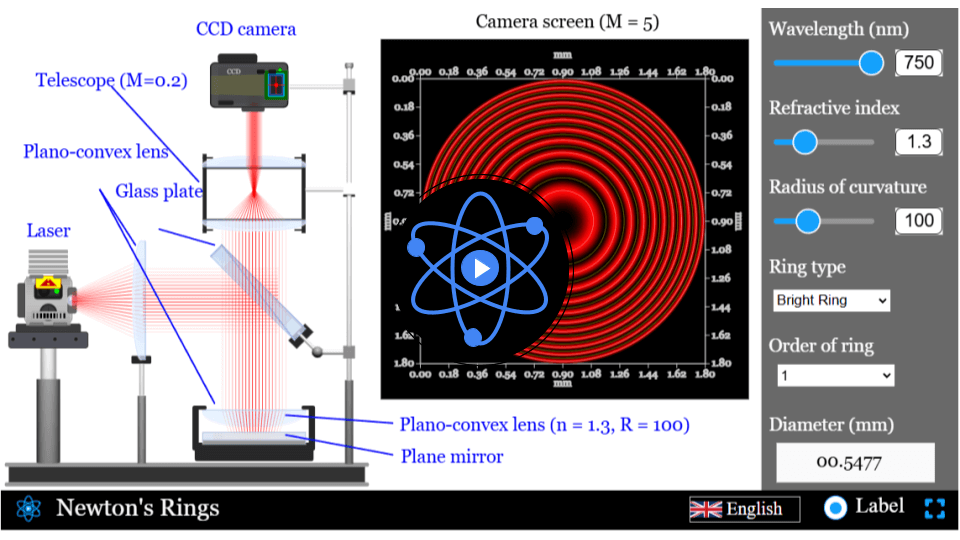Malus's law simulator
Explore Malus’s Law with our interactive simulator, and observe how light intensity changes as it passes through polarized filters at varying angles.
Malus's law
Physics is woven into our everyday world, influencing how we perceive and interact with light. Have you ever wondered why polarized sunglasses reduce glare or how light behaves through different filters? The answer lies in the intriguing principle of Malus’s Law. With our interactive simulator, you can explore this phenomenon firsthand. . Adjust the angles in the polarizer and analyzer, experiment with light intensity, and see how the orientation of light affects its brightness. Dive into the science of polarization and discover the unseen workings of light — start experimenting today!
\( I = I_0 \cos^2(\theta) \)
Mathematical description
Malus’ Law describes the intensity of light passing through a polarizer as a function of the initial intensity and the angle between the light’s polarization and the polarizer’s axis.
where:
- \( I_o \) is the laser intensity without analyzer
- \(\theta\) is the angle between polarizer and analyzer (fast axis).
Tutorial video
Take a quick spin through our simulator!
Explore Malus's Law -
One Question at a time!
Qus 1. What is Malus's Law?
Malus’s Law describes the intensity of light passing through a polarizer, stating that the intensity of polarized light is proportional to the cosine square of the angle between the light’s initial polarization direction and the axis of the polarizer. The formula for Malus’s Law is \( I = I_0 \cos^2(\theta) \) where \( I_o \) is the initial intensity and \(\theta\) is the angle between polarization directions.
Qus 2. What's the difference between polarizer and analyzer in Malus's law experimental setup?
A polarizer and an analyzer are typically made from the same material and have similar structures, but their roles differ based on their placement in an optical setup.
Each has a preferred polarization direction, allowing only the component of light aligned with its polarization axis to pass through. When unpolarized light first encounters the polarizer, it emerges as polarized light along the polarizer’s axis. This polarized light then encounters the analyzer, which either transmits or blocks varying amounts of light depending on the angle between its polarization axis and that of the initial polarizer.
This arrangement enables exploration of Malus’s Law by adjusting the relative angle between the polarizer and analyzer, illustrating how light intensity decreases as the angle between the polarization axes increases.
Qus 3. Why the resultant intensity of light is proportional to \(\cos^2(\theta) \) ?
Projection of Electric Field Component: When light passes through a polarizer, its electric field \(E\) aligns along the polarizer’s axis. As the light encounters the analyzer, only the component of the electric field that aligns with the analyzer’s axis will pass through. The effective electric field \( E\) that passes through the analyzer is given by
\( E = E_0 \cos(\theta) \)
where \( E_0 \) is the initial electric field amplitude after the first polarizer.- Intensity Proportional to Electric field squared: Light intensity \( I \) is proportional to the square of electric field’s amplitude, or \( I \propto E^2 \). So, when the Electric field component transmitted through the analyzer is \( E = E_0 \cos(\theta) \), then the resulting \( I \) becomes
\( I= I_0 \cos^2(\theta) \)
This relationship shows that the transmitted intensity depends on the angle between the polarizer and analyzer, with intensity diminishing as the angle increases due to the \( \cos^2(\theta) \) term. - At \( \theta =90^\circ \) no light passes through, while at \( \theta =0^\circ \), maximum light intensity is transmitted.
Qus 4. What are some real life applications of Malu's law?
Malus’s Law is widely applied in optics, such as in polarized sunglasses, photography, and optical instruments, to control light intensity. For example, polarized sunglasses reduce glare by blocking horizontally polarized light, enhancing visibility and reducing eye strain in bright conditions.
Qus 5. What is the Importance of Malus's Law in Optics?
Malus’s Law is crucial in understanding how light interacts with polarizers, which has applications in controlling light intensity in optical devices. It helps in designing polarizing filters used in cameras, screens, and optical instruments to manage light for improved clarity and reduced glare.
Qus 6. What are the Limitations of Malus's Law?
Malus’s Law is crucial in understanding how light interacts with polarizers, which has applications in controlling light intensity in optical devices. It helps in designing polarizing filters used in cameras, screens, and optical instruments to manage light for improved clarity and reduced glare.
Qus 6. How is Malus's law applied in photography?
Malus’s Law is applied in photography through the use of polarizing filters. These filters control the intensity and polarization of light entering the camera lens. By rotating a polarizer, photographers can reduce glare, manage reflections, and enhance contrast and color saturation — especially in skies, water, and glass surfaces. The change in brightness follows Malus’s Law, which states that light intensity varies as the cosine squared of the angle between the light’s polarization direction and the filter’s axis.
Qus 7. What is the Role of Malus’s Law in Polarized Sunglasses?
Malus’s Law explains why polarized sunglasses effectively reduce glare. The polarizing layer in these lenses blocks horizontal light waves by allowing only certain polarizations through, reducing reflected light intensity and thus protecting the eyes from excessive glare.




